GENERAL DATA
Plant parts: Resin
Cultivation mode: Wild collection
In manufacturing: Pharmaceutical, Dyeing, Varnish, etc.
🐉 Industries That Use Dragons Blood Resin from Dracaena cinnabari Balf.f.
(Socotra Dragon Tree – also known as “Dam al-Akhwain”)
Dragons Blood is a deep red resin exuded from the bark of the ancient Dracaena cinnabari tree, native to the Socotra archipelago (Yemen). This resin is prized for its antimicrobial, anti-inflammatory, astringent, and pigmenting properties. It has been used since antiquity in traditional medicine, incense, dyes, and magic rituals, and today it plays an expanding role in several specialized industries.
1. Pharmaceutical & Traditional Medicine Industry
Dragons Blood is widely used in Ayurvedic, Unani, Persian, and Chinese medicine systems.
Applications:
-
Wound healing and blood-staunching agent
-
Applied to ulcers, cuts, bruises, and burns
-
Included in oral powders for ulcers and digestive tract bleeding
-
Used as an anti-diarrheal and intestinal astringent
✅ Known for proanthocyanidins, flavonoids, and phenolics with healing and protective effects
2. Cosmetic & Personal Care Industry
A prized ingredient in high-end skincare due to its antioxidant and skin-firming properties.
Applications:
-
Anti-aging creams to support collagen and reduce inflammation
-
Firming serums and skin-repair balms
-
Added to soothing masks for redness or rosacea
-
Used in after-shave lotions and herbal scrubs
✅ Considered a natural “skin resin shield” that protects from environmental damage
3. Perfumery & Incense Industry
Dragons Blood is a legendary base in ritual incense, natural perfumery, and spiritual aromatherapy.
Applications:
-
As a binding agent in incense sticks and cones
-
Burned as resin incense for spiritual protection, space cleansing
-
Incorporated in botanical perfumes with woody and spicy tones
-
Popular in ceremonial blends in Middle Eastern and Asian traditions
✅ Provides a resinous, earthy, slightly sweet smoke with a mystical aroma
4. Textile, Dye & Artisanal Crafts Industry
Traditionally used as a pigment in manuscripts, art, and decorative dyeing.
Applications:
-
Natural red dye in inks and calligraphy
-
Used in ritual painting, Buddhist iconography, and manuscripts
-
Applied to textiles and leather for coloring and protection
✅ Known for its deep crimson hue and binding strength
5. Spiritual & Ethnomagic Use
Still employed in folk rituals, Tibetan and Islamic healing, and protective talismans.
Applications:
-
Added to amulets and talismanic inks
-
Burned for exorcism, luck, and warding negativity
-
Carried as a symbol of life-force, blood, and protection
-
Ground into powders used in ritual baths or charms
✅ Deeply symbolic in esoteric traditions and healing lore
6. Export & Herbal Raw Material Market
Sought after as a rare, wild-harvested resin, often sold in high-end apothecaries or ethnic markets.
Available Forms:
-
Solid resin lumps or powder
-
Tinctures and extracts
-
Packaged in vials, incense kits, or herbal blends
✅ Often authenticated as Socotran origin due to purity and color
✅ Summary of Key Applications
| Industry | Common Uses |
|---|---|
| Pharmaceutical & Traditional | Wound healer, ulcer remedy, anti-inflammatory agent |
| Cosmetic & Skincare | Firming creams, anti-aging serums, soothing balms |
| Perfumery & Incense | Resin incense, perfume bases, ceremonial scents |
| Textile & Craft | Natural red dye in art, calligraphy, ritual coloring |
| Spiritual & Ritual | Amulets, cleansing incense, symbolic protection tools |
| Export & Raw Material | Bulk resin, artisan incense, cosmetic ingredient |
🔬 Key Characteristics of Dragon’s Blood Resin (Dracaena cinnabari)
-
Color: Deep crimson to dark red
-
Form: Brittle resin chunks or powder
-
Solubility: Soluble in alcohol, limited in water
-
Main Constituents: Proanthocyanidins, taspine, flavonoids, phenolics
-
Collection Method: Tapped from bark cuts or natural fissures
-
Storage: Keep dry, sealed, and away from heat/light
-
Purity Note: Must be authenticated – not to be confused with Daemonorops spp. or Croton spp. types
🐉 Industries That Use Dragon’s Blood Resin from Calamus draco (Willd.)
Dragon’s Blood from Calamus draco — often called Rattan Dragon’s Blood — is a reddish resin extracted from the fruit and stalks of Southeast Asian rattan palms. Its traditional and modern uses span art, folk medicine, incense-making, dyeing, and wood finishing.
1. Traditional Medicine & Ethnopharmacology
Used for its styptic, astringent, and wound-sealing properties, especially in Southeast Asian and Ayurvedic medicine.
Applications:
-
External wound powder for cuts, burns, ulcers, and abrasions
-
Toothache and gum support (gargle or paste)
-
Hemostatic agent in traditional rituals (to stop bleeding)
-
Digestive astringent in small doses for diarrhea and ulcers
✅ Contains dracorhodin and resin acids with antiseptic and anti-inflammatory potential.
2. Incense & Aromatic Industry
Valued in incense stick and cone manufacturing for its mild scent, color, and spiritual symbolism.
Applications:
-
Base resin in joss sticks and loose incense blends
-
Ritual smoke in Chinese, Hindu, and Buddhist ceremonies
-
Used in cleansing, protection, and purification rituals
-
Blended with Sandalwood, Benzoin, or Frankincense
✅ When burned, it gives off a lightly sweet, earthy smoke.
3. Woodwork, Varnish & Luthiery Industry
One of its oldest uses is as a natural red pigment and varnish.
Applications:
-
Mixed into alcohol-based varnishes for string instruments (e.g., violins)
-
Added to furniture polishes and lacquers for deep reddish finish
-
Used in gilding and woodcraft for color enhancement
✅ Known historically in European violin making, referred to as “dragon’s blood varnish.”
4. Art & Pigment Industry
Used as a natural colorant and ink in traditional calligraphy, painting, and manuscript decoration.
Applications:
-
Pigment in medieval art and illumination
-
Ingredient in magic inks or ritual sigils
-
Used in some leather tanning and textile dyeing
✅ Deep crimson color that blends well with alcohol-based mediums.
5. Spiritual & Magical Traditions
Often included in rituals, powders, and spellwork for protection and strength.
Applications:
-
Burned in ritual incense for banishment/protection
-
Powdered and mixed into ritual oils or mojo bags
-
Incorporated in grimoire ink for sacred writing or sigils
-
Used to anoint tools or altars in Wicca, Hoodoo, and folk traditions
✅ Associated with fire element, Mars energy, and courage/protection symbolism.
6. Export & Bulk Resin Markets
Sourced mostly from Indonesia, Sumatra, and Malaysia, and exported as:
Available Forms:
-
Powdered red resin
-
Resin-covered fruits (traditional raw format)
-
Block or cake form for incense and varnish makers
✅ More affordable and widely available than Dracaena-type resins.
✅ Summary of Key Applications
| Industry | Common Uses |
|---|---|
| Traditional Medicine | Wound powder, anti-diarrheal, ulcer support |
| Incense & Aromatics | Joss sticks, ritual incense, cleansing blends |
| Wood & Instrument Varnish | Red varnish for violins, woodcraft, antique finishing |
| Art & Pigment Industry | Natural red pigment, sacred inks, manuscript decoration |
| Spiritual & Folk Rituals | Protection incense, magical powders, ritual oils |
| Export & Resin Markets | Powdered resin, incense ingredient, wood varnish component |
🌿 Botanical & Physical Highlights
-
Scientific name: Calamus draco (Willd.)
-
Family: Arecaceae (Palm family)
-
Origin: Southeast Asia (Indonesia, Malaysia, Sumatra)
-
Part used: Resin from rattan fruit coat or stem
-
Color: Bright red to deep crimson
-
Solubility: Alcohol-soluble
-
Storage: Cool, dry, away from direct light; prone to clumping in humidity
🐉 Comparison Table: Calamus draco vs Dracaena cinnabari Dragon’s Blood
| Feature | 🐉 Calamus draco (Willd.) – Rattan Dragons Blood | 🌳 Dracaena cinnabari (Balf.f.) – Socotra Dragons Blood |
|---|---|---|
| Botanical Family | Arecaceae (Palm family) | Asparagaceae (formerly Liliaceae) |
| Plant Type | Climbing palm / rattan vine | Tree with umbrella-shaped crown |
| Geographic Origin | Southeast Asia (Indonesia, Malaysia, Thailand) | Socotra Island, Yemen |
| Part Used | Resin coating the rattan fruits/stems | Resin exuded from bark or trunk incisions |
| Resin Collection | Scraped or extracted from dried fruits | Tapped or collected as hardened exudate |
| Color | Bright red, waxy or powdery | Dark crimson to deep red, brittle/glassy |
| Main Constituents | Dracorhodin, resin acids, anthocyanins | Proanthocyanidins, taspine, flavonoids, phenolic compounds |
| Traditional Uses | Folk wound healing, incense, dye, wood polish | Herbal healing, spiritual rituals, premium cosmetics |
| Medicinal Value | Mild styptic and anti-inflammatory | Stronger antioxidant, wound healing, anti-inflammatory |
| Burn Scent | Mild, faintly sweet and woody | Deeper, resinous, slightly sweet-earthy |
| Modern Industrial Uses | Incense sticks, lacquers, ritual powders, dyes | Premium skincare, apothecary, sacred incense |
| Price & Rarity | Widely available, inexpensive | Rare, expensive, high-grade export product |
| Solubility | Alcohol-soluble, waxy melt | Alcohol-soluble, more brittle and resinous |
| Risk of Adulteration | High – often diluted or synthetic-mixed | Low – rare and traceable, but sometimes misrepresented |
| Spiritual/Ethnomagic Use | Ritual powders and incense in folk religions | High ceremonial use in Middle East, African & Persian rituals |
| Appearance in Market | Powder, resin lumps, fruit scrapings | Resin chunks, powders, or tinctures |
✅ Summary
-
Calamus draco is better suited for:
➤ Artisan incense, joss sticks, wood polish, and ritual powders.
➤ Affordable and widely accessible. -
Dracaena cinnabari is preferred for:
➤ Therapeutic, cosmetic, pharmaceutical, and ceremonial purposes.
➤ More potent, rare, and often higher priced.
PRODUCT NAME IN DIFFERENT LANGUAGES
Persian Name: خون سیاوشان/ Khoon Siavashan
German Name (Deutschland, Austria, Switzerland): Drachenblut
French Name (France, Belgium, Switzerland, Quebec): Sang du Dragon
HARVEST CALENDAR
Feb
Mar
Apr
May
Jun
Jul
Aug
Sep
Oct
Nov
Dec
To order Dragon Blood tree resin, please contact us.
About Dragons Blood Resin
Dragons Blood is a resin from a tree whose main trunk is long and cylindrical like palm trees and its height reaches five meters. This tree usually has a very thick trunk and many thick, crooked branches. The resin of this tree is hard, brittle, red, tasteless and odorless. The best Dragons Blood is ooze, smooth and pure.
The leaves of Calamus draco tree are long, pointed, and relatively thick and grow only at the ends of the secondary branches. So much that the trunk of the tree and the body of the branches are completely without leaves. The leaves of this tree grow in dense bunches without petioles. The flowers are small and yellowish green, and each flower has six petals. The flowers of this tree grow in clusters. The fruits are small, spherical and almost the size of cherries. These fruits are green at first. But after fully ripening, they turn orange.
Dragons Blood resin is taken from the fruits of Calamus draco tree and after purification and drying, its pieces are placed on palm leaves and be sold in the market. From another tree named Dracaena cinnabari Balf.f. also a resin is taken which is similar to Dragon’s Blood.
Dracaena cinnabari tree, whose resin is extracted from its stems, has benefits similar to Dragons Blood. The diameter of this tree reaches amazing dimensions, and the diameter of the lower part of the tree trunk against the chest can be seen up to 15 meters. The age of these trees exceeds centuries. It looks like a palm tree. Its flowers appear in the 25th year, and a resin similar to the Dragons Blood is obtained from the bark of the stems and trunks by splitting them.
If the pieces of this gum are thin, they are beautiful red and slightly bright. If it is drawn on paper, it will leave a mark. It is odorless and tasteless, and if it is burned, it has slightly aromatic smell (like Pistacia atlantica resin). Dragons Blood resin dissolves in alcohol and Carbon Disulfide, chloroform, and gasoline.
Dragons Blood Temperament
Third degree of cold and dry.
Dragons Blood Health Benefits
This resin is anti-bleeding for the whole organs of the body. Eating the Dragon’s Blood with egg yolk causes wounds healing, removes excess heat from the liver, stomach, and intestines, and prevents excrement from spilling into the body’s organs.
It also improves dysentery, bloody diarrhea, bilious diarrhea, and anal fissure.
Rubbing the powder of this resin in the eyes strengthens it and is useful for eye ulcers.
Brushing the teeth with Dragons Blood powder strengthens the gums.
Sprinkle Dragons Blood powder on swelling cause healing of wounds and stops bleeding.
In China, Dragon’s Blood resin is used as a pain reliever, tonic, to heal wounds and stop bleeding. In the Malay Peninsula, it is used in a limited amount in cases of indigestion and presence of blood in the urine, sprue disease and to relieve stomach pain.
In Indochina, they use it to expel phlegm from the body.
Dragons Blood Dose
1.2 to 3.4 grams.
Dragons Blood Side Effects
kidney.
Dragons Blood Modifiers
To order Dracaena cinnabari resin, please contact us.


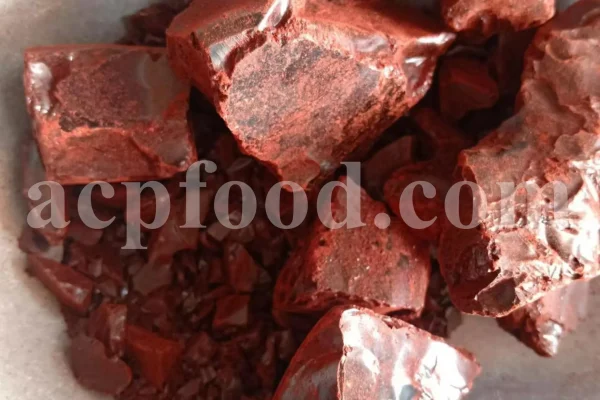

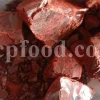
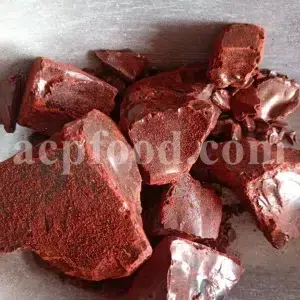


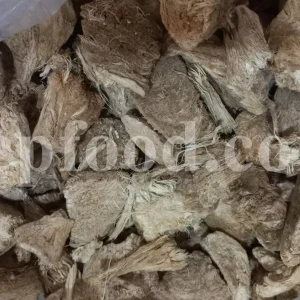
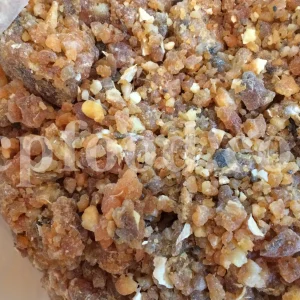
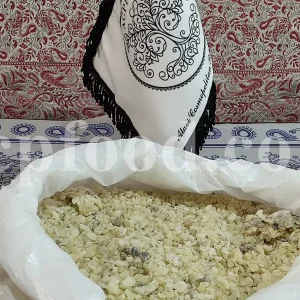
Reviews
There are no reviews yet.